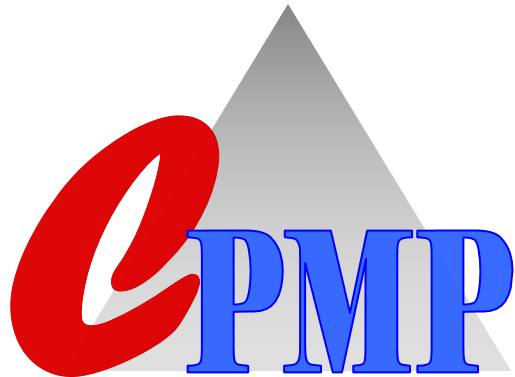
How to Make Your Resume Stand Out to Employers (With Tips)
Preparing a resume for a job position involves several key steps to ensure that your resume stands out and effectively showcases your skills, experience, and suitability for the role. Here's a guide to help you create an impactful resume:
If you're interested in learning how to make your resume stand out, here are the steps you can take:
1. Understand the recruiting manager's requirements
Review the job description and the company's website before you write your resume. Consider carefully the information you intend to include and how your qualifications relate to the role. Concentrate on the company's culture, the keywords in the job description and the responsibilities associated with this job to help tailor your document to the position.
2. Include a heading
When hiring for an open position, employers often evaluate many resumes. An effective heading helps the hiring manager know who submitted the resume and provides information for them to contact you if they choose to move forward in the hiring process. When creating a header, be sure to include your name at the top and if you have space, consider increasing the text size. Then include your city and province, telephone number and email address.
3. Include a summary
Include a summary or resume objective just below your header. A summary is typically only one to three sentences long and includes an overview of your relevant experience and skills. This is more suitable for those with experience in the field. A resume objective is typically one to two sentences long and explains your professional goals and the skills you can bring to the organization. This type of summary is more suitable for people with little experience in the field.
There are two other types of resume introductions to consider including on your resume:
-
Qualifications: Professionals with extensive experience may begin their resume with a bulleted list of three or four points highlighting their best skills and accomplishments throughout their career.
-
Profile: When you want to include more information at the opening of your resume, you may use a resume profile. This can be in bullet points or paragraph format and can include information about your years of experience, expertise, hard and soft skills, accomplishments and career objectives.
4. Tailor your resume to the industry and position
You can add relevant work experience that demonstrates your qualifications for the role. For example, if you're looking for a position as a newspaper reporter, the hiring manager is typically more interested in your experience working for the school newspaper rather than babysitting experience. Include only relevant roles that demonstrate that you understand their job requirements and have the skills and knowledge to fulfill the role. When you include experience on your resume, you may showcase your expertise in specific areas while also emphasizing some transferrable skills.
The experience section typically includes at least two previous jobs relevant to the role you're applying for, but you can mention other positions if you lack experience. Include details and accomplishments from these experiences to help demonstrate your capabilities. Remember to list your experience in reverse chronological order, starting with the most recent role. This section may also include any accomplishments or honours achieved in past positions.
5. Increase your resume's aesthetic appeal
Here is a list of considerations to help ensure your resume is professional:
-
Font style: Be sure that the font you use for your resume is clear and professional. Consider using fonts such as Georgia, Times New Roman, Calibri or Helvetica.
-
Font size: Choosing a suitable font size helps ensure a recruiter can read the content of your resume. Consider using a font size of 12 to help ensure readability.
-
Template: Maintain a minimalist look in your designs. If you're using a template, ensure that the visual components highlight the resume's content rather than distract from it.
-
Colour scheme: When developing your resume, choose a visually appealing colour scheme. White is an excellent background colour, black is optimal for writing and a third colour may be used to draw attention to specific information.
6. List hard and soft skills
A resume's skills section allows you to list your relevant hard skills and soft skills. Hard skills are job-specific technical abilities or training, such as data analysis or graphic design. Soft skills refer to personality traits that influence how you work, such as organization and time management. It's important to review the job description and search for any keywords that you can include on your resume.
7. Include a cover letter with your application
Certain companies may request you submit a cover letter along with your resume when applying for a role. Writing an effective cover letter can help you elaborate on specific skills and accomplishments you listed on your resume. Ensure that the cover letter's style and the colour scheme match those of your resume for a more coherent application and to help you appear more professional.
8. Check for errors
Review your resume to ensure it's free from errors before submitting it. Having a resume without errors conveys your professionalism and attention to detail to the hiring manager. If you customize your resume for each position you're interested in, review each version before submitting it. You can review the document yourself or ask a friend or family member to proofread it for you.
Why do you need a well-written resume?
You need a resume as it provides you with an opportunity to offer critical information about your experience, knowledge, skills and personality to a potential employer. Here is a list of reasons you may need a resume:
Highlights your relevant skills and expertise
A resume that is structured well can effectively communicate to prospective employers your most relevant skills and experiences. This enables them to assess your suitability for the role and hire the most qualified candidate. It's important that your resume accurately reflects your most relevant skills, knowledge and experience. An effective resume utilizes formatting aspects such as colour, margins and design to convey professionalism and helps the hiring manager learn about your most impressive accomplishments.
Shows the benefits you provide to employers
It's important for a resume to communicate to employers what you can offer to the business. For example, if you're leaving a sales position, rather than just stating that you're a "top performer," state that you "achieved $300,000 in new media sales in 6 months." This enables companies to quantify the value you can contribute to their organization. Try to include three or four measurable accomplishments for each relevant experience on your resume.
Attracts the attention of potential employers
The most important part of your resume is typically at the top quarter of the document, as this is where you list your most impressive and memorable attributes. Along with your name and contact information, you can list important summarized information. Another strategy for gaining an employer's attention is to use a layout that incorporates suitable colours or graphics. You may choose to market yourself to prospective employers through the use of a personal logo. If you want to print your resume and submit a hard copy, always choose a professional resume paper stock.
Matches you to the role
A strong resume aligns your skills with the requirements of the job role. One method to accomplish this is to ensure that your resume includes the same keywords as the job description. For instance, if the job description specifies "experience with spreadsheets," ensure that your resume includes the term "spreadsheets." If you submit your resume online, some employers may automatically filter it with keywords. By doing this, you can help demonstrate to employers that you're qualified for the role.
Tips on how to make your resume stand out
Here are some extra tips for making your resume stand out to increase your chances of landing an interview:
Use professional fonts
When writing a resume, try to carefully consider the fonts to use. Calibri, Arial, Times New Roman and Helvetica are all good choices for resumes. While you want your resume to stand out, it's also important for it to be easy to read. Focus on aesthetically pleasing, simple fonts. Use fonts with sizes of 10-12.
Study market-leading examples
Examining sample resumes in your sector can help you determine what is acceptable. For instance, a marketer's brightly coloured resume may not make sense for a manufacturing executive. Understanding what professionals in your sector consider acceptable is critical for determining the best way to format your resume.
Use active language
Focus on active language and remove unnecessary words to make your resume concise. For example, rather than stating I attained the position of a manager within three years of working for the firm, state Attained manager within three years. Not only can this help keep your resume concise, but it may also stand out more to a hiring manager who may not have time to look
